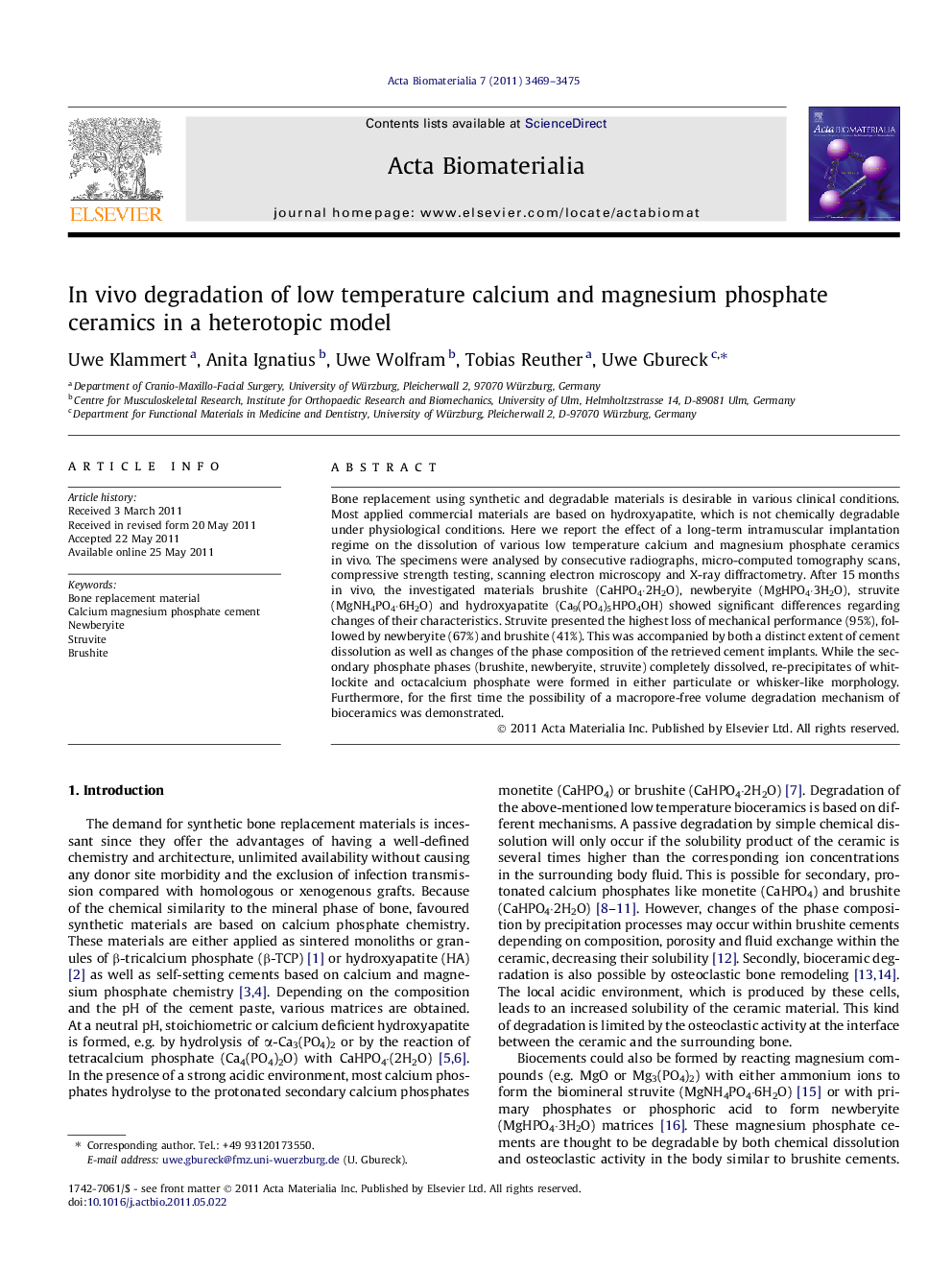| Article ID | Journal | Published Year | Pages | File Type |
|---|---|---|---|---|
| 892 | Acta Biomaterialia | 2011 | 7 Pages |
Bone replacement using synthetic and degradable materials is desirable in various clinical conditions. Most applied commercial materials are based on hydroxyapatite, which is not chemically degradable under physiological conditions. Here we report the effect of a long-term intramuscular implantation regime on the dissolution of various low temperature calcium and magnesium phosphate ceramics in vivo. The specimens were analysed by consecutive radiographs, micro-computed tomography scans, compressive strength testing, scanning electron microscopy and X-ray diffractometry. After 15 months in vivo, the investigated materials brushite (CaHPO4·2H2O), newberyite (MgHPO4·3H2O), struvite (MgNH4PO4·6H2O) and hydroxyapatite (Ca9(PO4)5HPO4OH) showed significant differences regarding changes of their characteristics. Struvite presented the highest loss of mechanical performance (95%), followed by newberyite (67%) and brushite (41%). This was accompanied by both a distinct extent of cement dissolution as well as changes of the phase composition of the retrieved cement implants. While the secondary phosphate phases (brushite, newberyite, struvite) completely dissolved, re-precipitates of whitlockite and octacalcium phosphate were formed in either particulate or whisker-like morphology. Furthermore, for the first time the possibility of a macropore-free volume degradation mechanism of bioceramics was demonstrated.
